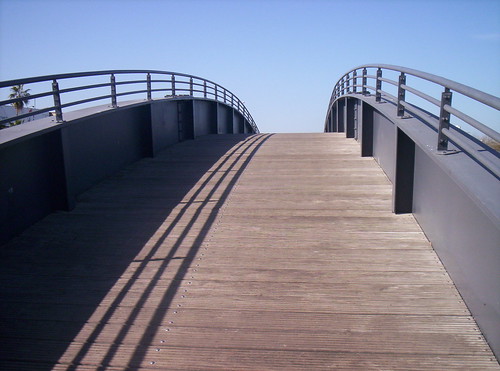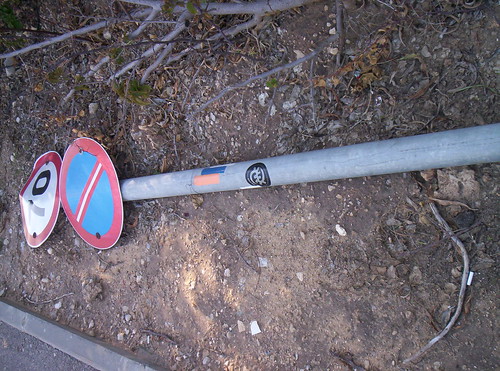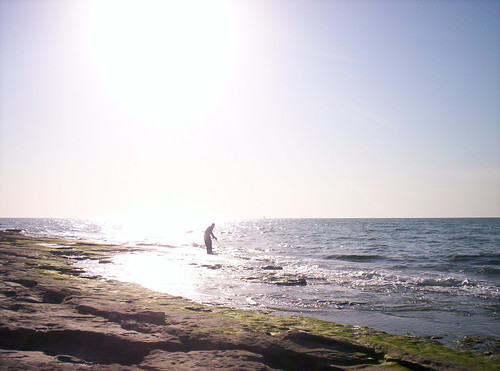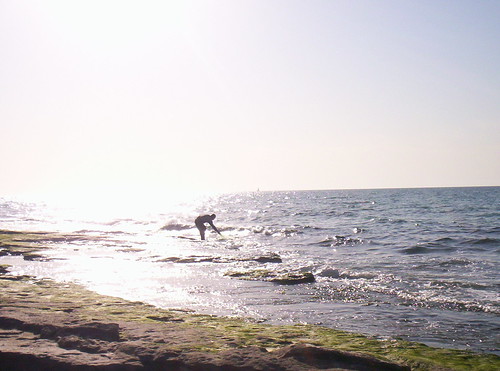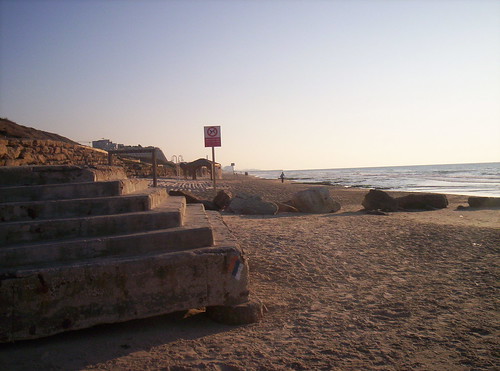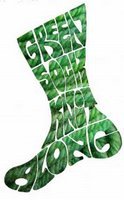We had agreed to take The Oldest Teen to his base on Sunday morning. Despite the prohibition on soldiers hitchhiking, every time we go out we load up our car with soldiers, so why not do it once for our own boy? Everything was planned, I had a nice walk planned out near Nitzanim, and then he comes home--he's been assigned, for the week, to the big army base at Tzrifin. Great. Who wants to walk in Rishon LeZion?
The day was beautiful when we left the house, horribly foggy by the time we got to the base. But since we were out, anyway, we decided to continue toward Beit Meir and see if the weather picked up. By the time we got to where we'd left off last the sun had come out, and we set off in the direction we'd meant to go last time, if only The Spouse didn't have a lousy sense of direction.
Israel National Trail markings are few and far between on this route. If you don't have a book with turn-by-turn instructions with you, just remember that you have to pass mishlat (fortified height) 16 and 21 to stay on the Trail.

The views here are very different from those on the beach walks. Hard to believe we're less than an hour away from there. The more I walk this country, the more I realize how much is compressed into this little slice of land.


Most of this walk is along the path used to gain the hills around Jerusalem. The historical aspect (the Palmach's fight to gain control of the fortified high ground, in Operation Maccabi, May 1948) is well-signed. The trail--less well signed.

Here's why a guidebook is so important. See any National Trail markings here? (Those would be blue, white, and orange.)

Overlook to the right, 4x4 path to the left. The overlook is probably on the trail, right? Wrong. When you get to this sign, you'll start to follow the green and white 4x4 trail. Occasionally there will be National Trail markings, but not often. As long as you're on track towards 16 & 21, you're in the right place, not that anyone will tell you.
After a nice little nature hike you'll reach mishlat 16, where you'll find a nice example of our national product--a memorial to the fallen, in this case, Palmach fighters.

It felt odd, a year and a half after the expulsions from Gush Katif, to see a marker memorializing (among others) 10 Palmach fighters who died trying to defend Kfar Darom in the fight for independence, and it made me think how different history would have been had they managed to hold on to the village back then.
We thought this was the difficult part of the trail--there were some somewhat steep uphills. The Spouse and I joke that we're doing "National Trail for the old and enfeebled," but this section is not for that demographic; we certainly couldn't see bringing his 86 year old mother here, for example.

Continue up the path, following the green and white markings, until mishlat 21.

Here the trail gets more complicated, because instead of following the signs to more historical markers, you have to go behind the memorial area, behind the firing stand (for some reason, exceptionally well marked)

and down between some rocks on what barely looks like a path. How a 4x4 is supposed to manage this part is beyond me.
For the next hour or so I only took pictures looking uphill after we'd scrambled down. If I'd had to look all the way down from where we were at the top of the mountain, I'd have been too chicken to go on.

Do you really think a 4x4 could do this path?
Finally an Israel National Trail marking, telling you to continue on the green path. We were getting hot and tired, so we decided to cut across the blue path, back to the red, which would circle around to where our car was parked.

No one, not even the guidebook, bothered to inform us that if green and white meant "barely passable for a 4x4," blue and white meant "barely passable by a mountain goat."

(See that vaguely light brown dirt path? That's the path to take. It's very well marked, which is good, because the trail itself is very poor, and tends to become slippery rock at the least provocation.)
The red trail! A Jeep trail! Probably passable! Yay!


The specs: From the Beit Meir hen houses to mishlat 21
Parking: Free parking at KKL's Rabin Park (space for 4-5 cars or 3 buses)
Return: Foot, baby. Bring a walking stick.
Difficulty Level: The trail itself is a bit steep in places, but manageable. The shortcut to make the walk circular is not recommended for anyone with a fear of heights or problems with balance. Wear good walking shoes.
Potential hazards: Steep rocky paths, poor signage, loose rocks.




